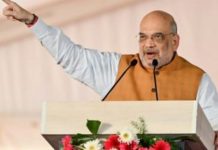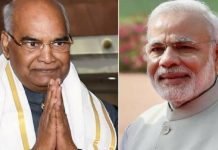[cycloneslider id=”power-to-the-people”]
It is tempting to make easy metaphors while watching Fahad Mustafa and Deepti Kakkar’s documentary Katiyabaaz: Kanpur, a once grand city, now as entangled in a crisis of bureaucracy and power as the glut of wires hanging above its streets. It is all the more tempting to make easy stereotypes. Here’s the hero, brave, angry and out to take down the establishment. Here’s the villain, the boss of the big bad company, the enforcer of cruel rules, extorter of poor people’s money. Here’s the higher cause, the great, divine creature that is electricity. As the film opens, Mustafa and Kakkar’s Kanpur is laid out for these forces to come do almighty battle for their cruel and fickle god.
Yet, if Katiyabaaz had remained just so, it would not be half the film it has become — touted as one of the best documentaries to come out of India this year, premiering at the Tribeca Film Festival 2013 (the only Indian film selected this year) and named the Best Film in the India Gold Section at the 15th Mumbai Film Festival. Shot with a great deal of style and excellent production values, this film is more than just a slickly packaged morality tale, a keeneyed exploration of Kanpur the city and the very nature of power, more social and political than electric. It tells a story that anyone in India, rather north India, has to live out daily.
Electricity is not just about the comforts of life, it is a matter of everyday survival. Of having water to drink and to cook with, of small businesses churning out daily earnings, of hospitals functioning. Yet, as the filmmakers walk us along the streets of Kanpur, we see how badly hit the city is by a power crisis. It seems that whoever controls the city’s electricity can control the city. In these streets, in these alleyways, the diminutive katiyabaaz (electricity thief ) Loha Singh is a hero, much sought after by the residents. Mustafa found him a day before filming started, a poor man living in Chamanganj, a local legend most famous for walking out unscathed from a transformer fire. A rather anarchic figure, he spews venom at the very mention of politicians, their promises, the Kanpur Electricity Supply Company Ltd (KESCO) and its new MD Ritu Maheshwari.
Why shouldn’t he steal electricity, he asks, bridling with indignation, when those in power have stolen it for the rich? Why not take from the rich of the Civil Lines area and give to the people struggling to make ends meet in the ‘sheher’? As he proudly shows of his many scars, markers of the threat to his life every time he climbs up a pole, it is clear that he endows himself with as much heroism as the residents do. It is also clear that he stakes as much ownership on electricity as the KESCO officials do.
This setting up of people as larger than life figures extends to Maheshwari as well. The first female MD KESCO has had, with a reputation for sternness, she tries to whip into shape a lackadaisical department of middle-aged men, all taken by surprise at being ordered around by a woman. As she deals with not just the power crisis but also the insidious sexism in her department, she is first treated as a devi by Kanpur’s denizens, a nurturing, caring figure who will listen to their troubles and provide them salvation. But public figures fall hard in the public’s eyes; soon her effigies are being burnt on the streets as she too is caught up in this tangle that is threatening to choke the city and all those who try to unravel it.
Mustafa is from Kanpur, a great advantage, he says, in a city where “everyone knows you or your father or your grandfather”. This familiarity helped him and Kakkar get close to the moments of crisis that the film heads for, to capture the tension that explodes, closely: the tug-of-war between Loha Singh and Maheshwari, private conversations with them both, the elections and the riots that break out over lack of electricity. As the city sweltering in heat and darkness boils over, Mustafa and Kakkar’s camera is right there, documenting the rage on the streets. “We spent nine months on the ground, and got into people’s lives and homes. Perhaps that’s why they didn’t attack us,” says Mustafa.
It is also this familiarity that allows them to avoid easy resolutions. “We started out trying to hold on to something good in the end,” admits Kakkar. “But when we got to know how desperate the situation is, when we realised that no side is making any concerted effort to better it, our focus shifted.” It shifted to a telling commentary on the powerlessness of these characters. Singh, for all his posturing, his conceit of heroism, can neither provide electricity to all, nor establish claim over all the wires. The sheer number and the mess defeats him, as other thieves sneak in on his territory. Maheshwari can do nothing when the residents will not pay for the electricity, leaving the city perpetually short of money to afford more power. And the residents of Kanpur remain, as always, powerless, unwilling to work with often corrupt bureaucrats, despairing of empty promises, unwilling and often incapable of paying for power.
Katiyabaaz comes from a cinematic context where fiction and documentary are both feeding off each other, using each other’s tools to better tell their own stories. Mindful of the fact that, as Kakkar says, “people think documentaries are those that are shown before a Bollywood film”, the filmmakers are determined to make their film see a big cinematic release. They are documenting events through personal narratives and the telling of a story. A tradition that, says filmmaker Shivendra Singh Dungarpur — director of that other great documentary of 2013, Celluloid Man — is nothing new to those familiar with documentary filmmaking. “Look at how documentaries started. It was by actors who wanted to document reality, to tell the stories of people.” According to him, every creative aspect of filmmaking has been incrementally improved upon. So Mustafa and Kakkar, while creating a film that looks and feels unique, are in fact drawing upon a longstanding history of great filmmaking.
Bikas Ranjan Mishra, editor of Dear Cinema however, does see this as a newer age, agreeing in part with Mustafa’s enthusiastic declaration that “in many ways, this is the golden age of documentaries”. This is a newer generation, he says, of filmmakers with stories not propaganda. These is an attempt to engage the audience, not just educate them. And there are definitely more opportunities for the money that goes into making a film look good, even if it comes form outside India. Katiyabaaz, cut and edited gorgeously from 250 hours of footage, tick marks all these boxes, and through the sheer strength of its subject matter, becomes that transcendental cinematic experience that no formula can create. This is the story of city caught in a vicious cycle, where lives are risked everyday to cut wires, to put out transformer fires. And at the start of every day, the desperate battles start all over again.
aradhna@tehelka.com













